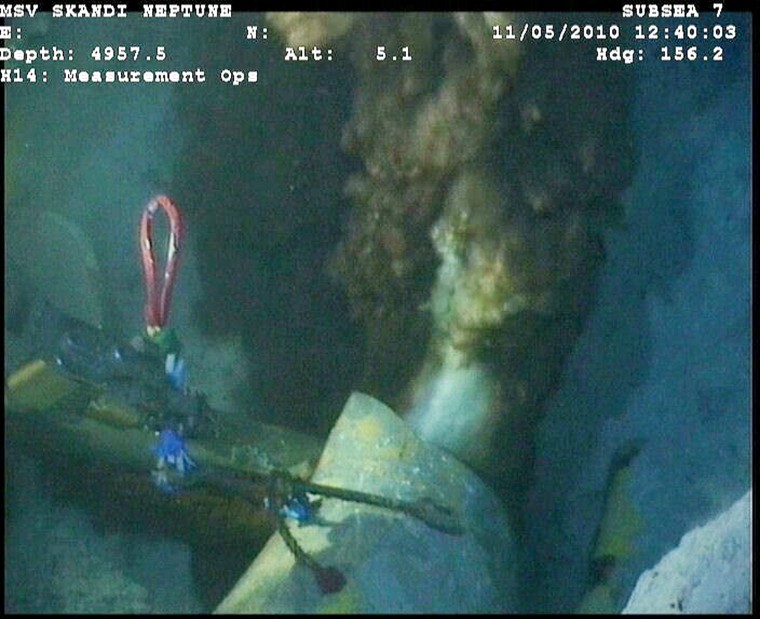The "top hat" containment system is still on track to be ready by Thursday, but BP now says it might first try attaching a pipe to the "riser" from which oil is gushing.
BP will decide within 24 hours what method will be tried first, BP Chief Operating Officer Doug Suttles said at a Wednesday afternoon news conference.
The options are a tube about six inches in diameter that would be inserted into the riser pipe gushing thousands of barrels of crude a day, or the two-ton top hat. Both would send the crude oil to a drill ship on the sea surface 5,000 feet above the seabed.
"What we're trying to do is find ways to prevent the formation of hydrates, so that's the attractiveness of it," Suttles said about the riser insertion tube.
Natural gas hydrates, which are ice crystals formed from water and natural gas under high pressure, defeated BP's first attempt to contain the flow of oil over the weekend. The hydrates filled the top of a 98-ton containment dome, nearly making it buoyant, Suttles said.
The 6-inch tube would be inserted in the riser, which is the name for the pipe that carried crude oil from the undersea well to the Deepwater Horizon drilling rig, which exploded on April 20 and sank on April 22. Eleven workers were killed in the blast.
BP may also use both the tube and the containment chamber, said company spokesman Tom Mueller.
"Both options are on the table," Mueller said.
The riser leak is thought to be responsible for the bulk of an estimated 5,000 barrels of crude per day flowing into the sea. Once that leak is contained, BP will have to stop a remaining leak from a balky blowout preventer that was supposed to stop the uncontrolled flow of oil from the well in the first place.
BP could also use a "junk shot", a mix of rubber and other materials fired into the blowout preventer by a manifold, which was positioned on the sea floor Wednesday.
The containment chamber was placed on the sea floor Tuesday night.
The tube was scheduled to ship out to the leak site later Wednesday and be ready for deployment no later than Friday, Suttles said.
The junk shot could be used late next week, he said.
Leak images released
Video and still images released Wednesday for the first time provided the public a close look at the main leak. In the video, the stream occasionally can be seen becoming lighter as natural gas mixes into the gusher.
Natural gas has been flowing from the well since the beginning. Suttles said the rate natural gas has been flowing out hasn't changed in the 21 days since the Deepwater Horizon exploded in the Gulf of Mexico.

In a separate development, federal wildlife officials are treating the deaths of six dolphins on the Gulf Coast as oil-related even though other factors may be to blame.
Blair Mase of the National Marine Fisheries Service said the carcasses have all been found in Louisiana, Mississippi and Alabama since May 2.
Samples have been sent for testing to see whether a massive oil spill in the Gulf of Mexico helped kill the dolphins.
Mase and animal rescue coordinator Michele Kelley in Louisiana said none of the carcasses has obvious signs of oil. Mase also said it's common for dead dolphins to wash up this time of year when they are in shallow waters to calve.
The Associated Press found dolphins swimming and playing in oily waters off Louisiana last week.
